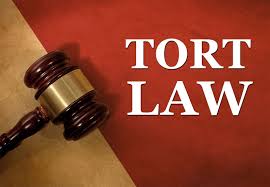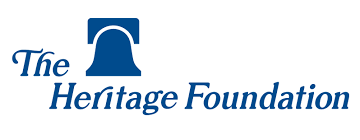
Defenses to Malpractice and Risk Management Techniques
Order Instructions:
Look at this case and respond to the 3 main points raise in the question, it is critical that the writer detail out the respond to the question clearly using credible sources and past case laws to support your stand on the case.
Take the malpractice case below and discuss the defenses that may be raised in that case. Discuss how the incident could have been prevented. What risk management techniques could have been used?
Case Study : Malpractice Action Brought by Yolanda Pinnelas
People Involved in Case:
Yolanda Pinnelas-patient
Betty DePalma, RN, MS-nursing supervisor
Elizabeth Adelman, RN, recovery room nurse
William Brady, M.D., plastic surgeon
Mary Jones, RN-IV insertion
Carol Price, LPN
Jeffery Chambers, RN-staff nurse
Patricia Peters, PharmD-pharmacy
Diana Smith, RN
Susan Post, JD-Risk Manager
Amy Green-Quality Assurance
Michael Parks, RN, MS, CNS-Education coordinator
SAFE-INFUSE-pump
Brand X infusion pump
Caring Memorial Hospital
Facts:
The patient, Yolanda Pinellas is a 21-year-old female admitted to Caring Memorial Hospital for chemotherapy. Caring Memorial is a hospital in Upstate New York. Yolanda was a student at Ithaca College and studying to be a music conductor.
Yolanda was diagnosed with anal cancer and was to receive Mitomycin for her chemotherapy. Mary Jones, RN inserted the IV on the day shift around 1300, and the patient, Yolanda, was to have Mitomycin administered through the IV. An infusion machine was used for the delivery. The Mitomycin was hung by Jeffrey Chambers, RN and he was assigned to Yolanda. The unit had several very sick patients and was short staffed. Jeffery had worked a double shift the day before and had to double back to cover the evening shift. He was able to go home between shift and had about 6 hours of sleep before returning. The pharmacy was late in delivering the drug so it was not hung until the evening shift. Patricia Peters, PharmD brought the chemotherapy to the unit.
On the evening shift, Carol Price, LPN heard the infusion pump beep several times. She had ignored it as she thought someone else was caring for the patient. Diana Smith, RN was also working the shift and had heard the pump beep several times. She mentioned it to Jeffery. She did not go into the room until about forty-five minutes later. The patient testified that a nurse Updated: June 2014 MN506- Unit 9 Page 3 of 5
came in and pressed some buttons and the pump stopped beeping. She was groggy and not sure who the nurse was or what was done.
Diana Smith responded to the patient’s call bell and found the IV had dislodged for the patient’s vein. There was no evidence that the Mitomycin had gone into the patient’s tissue. Diana immediately stopped the IV, notified the physician, and provided care to the hand. The documentation in the medical record indicates that there was an infiltration to the IV.
The hospital was testing a new IV Infusion pump called SAFE-INFUSE. The supervisory nurse was Betty DePalma, RN. Betty took the pump off the unit. No one made note of the pump’s serial number as there were 6 in the hospital being used. There was also another brand of pumps being used in the hospital. It was called Brand X infusion pump. Betty did not note the name of the pump or serial number. The pump was not isolated or sent to maintenance and eventually the hospital decided not to use SAFE-INFUSE so the loaners were sent back to the company.
Betty and Dr. William Brady are the only ones that carry malpractice insurance. The hospital also has malpractice insurance.
Two weeks after the event, the patient developed necrosis of the hand and required multiple surgical procedures, skin grafting, and reconstruction. She had permanent loss of function and deformity in her third, fourth, and fifth fingers. The Claimant is alleging that, because of this, she is no longer able to perform as a conductor, for which she was studying.
During the procedure for the skin grafting, the plastic surgeon, Dr. William Brady, used a dermatome that resulted in uneven harvesting of tissue and further scarring in the patient’s thigh area where the skin was harvested.
The Risk Manger is Susan Post, J.D. who works in collaboration with the Quality Assurance director Amy Green. Amy had noted when doing chart reviews over the last three months prior to this incident that there were issues of short staffing and that many nurses were working double shifts, evenings and nights then coming back and working the evening shift. She was in the process of collecting data from the different units on this observation. She also noted a pattern of using float nurses to several units. Prior to this incident the clinical nurse specialist, Michael Parks, RN, MS, CNS, was consulting with Susan Post and Amy Green about the status of staff education on this unit and what types of resources and training was needed.
Resources
Anselmi, K. K. (2012). Nurses’ personal liability vs. employers’ vicarious liability. MEDSURG Nursing, 21(1), 45–48.
American Nurses Association Nursing World. (2009). Patient safety: Rights of registered nurses when considering a patient assignment. Retrieved from http://www.nursingworld.org/MainMenuCategories/Policy-Advocacy/Positions-and-Resolutions/ANAPositionStatements/Position-Statements-Alphabetically/Patient-Safety-Rights-of-Registered-Nurses-When-Considering-a-Patient-Assignment.html
Essentials of Nursing Law and Ethics
Chapter 5: “Defenses to Negligence or Malpractice”
Chapter 6: “Prevention of Malpractice”
Chapter 7: “Nurses as Witnesses”
Chapter 8: “Professional Liability Insurance”
Chapter 9: “Accepting or Refusing an Assignment/Patient Abandonment”
Chapter 10: “Delegation to Unlicensed Assisted Personnel”
SAMPLE ANSWER
Defenses to Malpractice and Risk Management Techniques
Introduction
It is the mandate of every medical practitioner to take care of the clients entrusted under his care. The doctor should not harm the patients, and neither should they make the existing illness worse. This case involves Yolanda Pinellas a 21 year old cancer patient entrusted under the care of Jeffrey Chambers. The client was admitted at Caring Memorial Hospital for chemotherapy but suffered massive injuries after being left unattended for over forty minutes. Despite the fact that she rung the bell, the medical staff in charge did not hurry to assuage her pain. Medical malpractice occurs when the treatment administered by the physician leads to further injury to the client (Infusion Nurses Society, 2010). Notably, there was an infiltration to the IV and as a result Yolanda suffered necrosis of the hand requiring her to go through multiple surgical procedures, skin grafting, and reconstruction. During the skin grafting process, the surgeon, Dr. William Brady, used a dermatome resulting to uneven harvesting of tissue, further scarring the patient’s thigh area where the skin was harvested.
The Defenses In This Case
While medical practitioners together with the other health care providers are not required to be perfect they have the duty to act responsibly and use reasonable care in their medical profession (Wickham, 2006). In the case of Yolanda VS Caring Memorial Hospital, Diana Smith, working during the shift heard the pump beep several times. She immediately alerted Jeffrey who was entrusted to take care of the client. Jeffrey did not take swift action as required, Diana went to the room after 40 minutes and discovered that IV had dislodged for the patient’s vein. She cross-checked and found that there was no evidence that the Mitomycin had gone into the patient’s tissue. Later it was discovered that indeed Mitomycin had gone to her tissue leading to massive injuries.
In Diana’s case, the practitioners were not apathetic, Diana responded to the patient’s bell. She took the right precautions by immediately stopping the IV, notifying the physician, and providing the necessary care to the hand. The major cause of the harm caused to Yolanda was not as a result of negligence. The Risk Manager Susan Post had noted over the last three months prior to the incidence that there were challenges of short staffing. Moreover, the nurses were working double shifts like Jeffery and this could compromise on their performance. Often the hospital assigned float nurses to several units (Sauerland, 2007). The hospital was in the process of implementing a training program to bolster the staff performance. In this case the damages that Yolanda occurred can be blamed on multiple acts of negligence, the burden of proof lies with the plaintiff to proof that more likely than not, the injuries she incurred were as a result of a particular negligent act.
How The Incident Could Have Been Avoided
This incident could be avoided by foremost ensuring that the ward in which Yolanda was admitted was sufficiently staffed because there were critically ill patients admitted in that ward. Infiltration which caused the leaking of the IV fluid could have been avoided if only one practitioner was assigned to conduct the operation. The staff who inserted the IV was not the one who administered the drug through the infusion machine. The practitioner should have applied a splint for stability and to prevent dislodging the IV infusion machine (Infusion Nurses Society, 2010).The hospital should have ensured that only qualified, chemotherapy-certified nurses trained in venipuncture are allowed to allowed administer vesicants. When Diana Smith heard the first bell from the client she should have respondent aptly knowing that the ward comprised of critically ill patients.
Management techniques That Could Have Been Used
During the administration of IV fluid the practitioner should have chosen a large vein with good blood flow for the placement of infusion machine. This would have minimized chances of infiltration (Ener, 2004). The venipuncture site must have been monitored closely to make sure that there was no infiltration, pain or discomfort.
References
Ener R., A. (2004). Extravasation of systemic hemato-oncological therapies. Ann Oncol. June;15(6):55-62.
Infusion Nurses Society (2010). Infusion Nursing. [3rd edition] 2010
Sauerland C,. A.(2007). Vesicant extravasation part I: Mechanisms, pathogenesis, and nursing care to reduce risk. Oncol Nurs Forum. 2007 Nov 27;33(6):114-41.
Schrijvers DL. Extravasation: a dreaded complication of chemotherapy. Ann Oncol. 2003;14 Suppl 3:iii26-30.
Wickham, R.(2006). Vesicant extravasation part II: Evidence-based management and continuing controversies. Oncol Nursing Forum. November 27;33(6):1143-50.
We can write this or a similar paper for you! Simply fill the order form!












